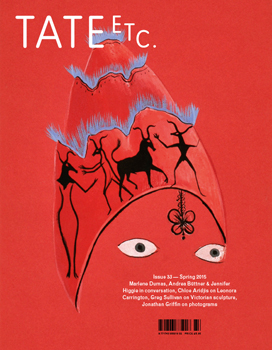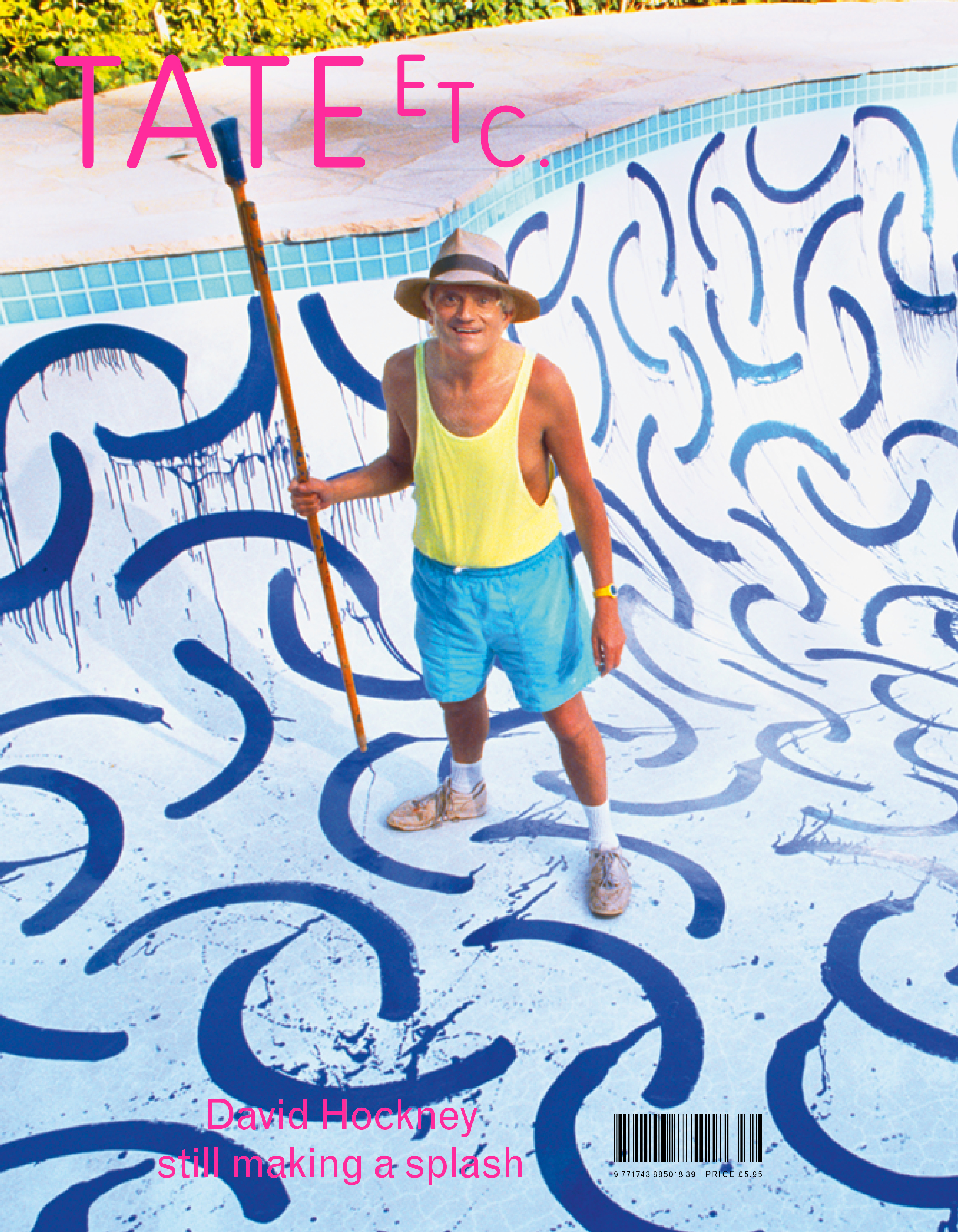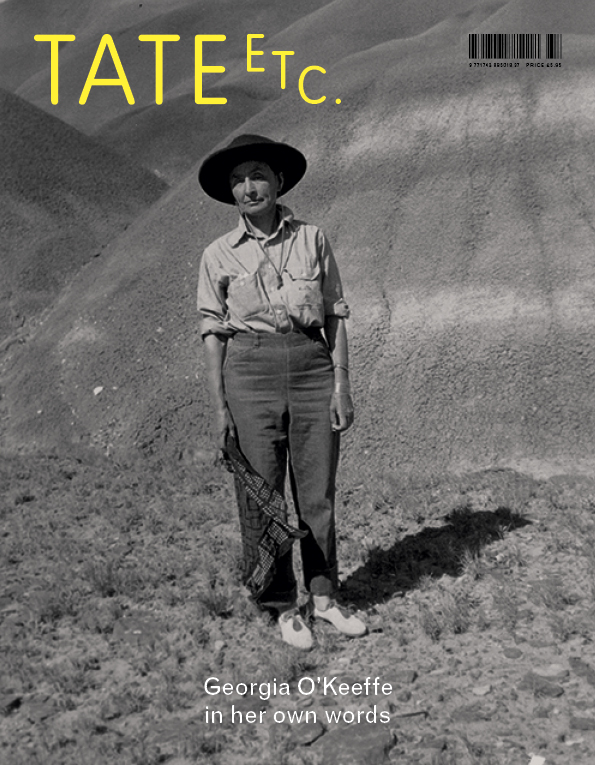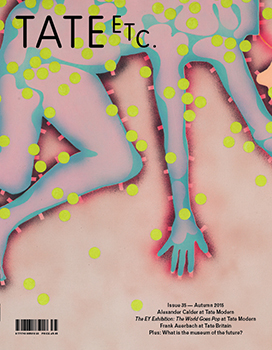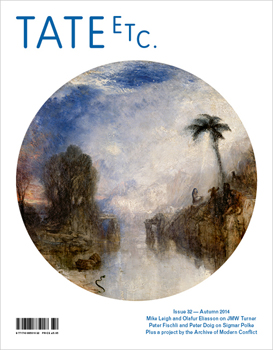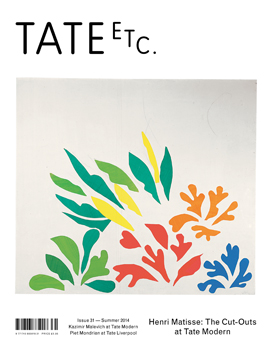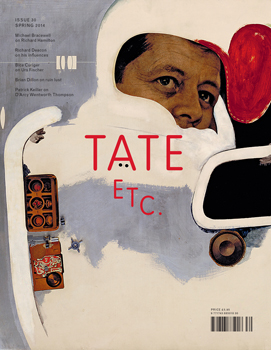Tate Etc. issue 33
Visiting and revisiting art, etcetera
Highlights include Andrea Buttner and Jennifer Higgie discussing porn, politics and personalities with Marlene Dumas on the eve of her new exhibition at Tate Modern, author and curator Chloe Aridjis on her friend Leonora Carrington, curator Greg Sullivan on Sculpture Victorious: Art in an Age of Invention 1837–1901, writer Jonathan Griffin looks at artists’ use of photograms to expand the boundaries of representation, a preview of Sonia Delauney: The Colours of Abstraction by curator Juliet Bingham and photographer Nick Waplington introduces his collaborative photobook made with Alexander McQueen.
Marlene Dumas (b. 1953) has been called “the world’s most interesting figure painter.” Her beautifully painted works, which can be seen in museums worldwide, explore themes of sexuality, love, death and shame, while borrowing from popular culture, art history and current affairs. Tate’s large-scale survey is the most significant exhibition of her work ever to be held in Europe, charting her career from early paintings through to new works on paper. To coincide with this, Tate Etc. brought together a fellow artist and a magazine editor to talk to her in her Amsterdam studio—about porn, politics and personalities.
As a young woman she ran away to Paris to be Max Ernst‘s lover and was feted by the surrealists where she was at the heart of an artist community of émigré artists and writers including Remedios Varo, Kati Horna, Luis Bunuel and her patron Edward James. As well as books and plays, Leonora Carrington (1917–2011) produced an extraordinary body of work filled with strange human, plant and animal forms, many inspired by the Mexican environment. To coincide with Tate Liverpool’s exhibition, its co-curator Chloe Aridjis, who also knew the artist, reflects on her life and work.
What do we imagine when we think of Victorian sculpture? Stern bronze busts of distinguished figures? Smooth marbles of lightly glad ladies? Yes, but there are much more besides. As Tate Britain’s exhibition Sculpture Victorious: Art in an Age of Invention 1837–1901 will show, artists took advantage of the extraordinary technological advances with astonishingly varied results, writes curator Greg Sullivan.
The photogram is an image made without a camera by placing an object directly on to the surface of a light-sensitive material and then exposing it to light. Since the dawn of photography it has been explored by practitioners such as Anna Atkins and Henry Fox Talbot, keen to expand the boundaries of representation. It was a technique much employed by early modernists such as László Moholy-Nagy and György Kepes and is enjoying something of a revival as seen in the works of Liz Deschenes, Nathaniel Mellors, Walead Beshty and Raphael Hefti, as Jonathan Griffin explores.
She was the wife of Robert Delaunay, but the extraordinary inventiveness and range of work by Sonia Delaunay (1885–1979) has long been overlooked…until now. An important figure in the Parisian avant-garde, her art celebrated the modern age in all its guises. Over a 60-year period she created ground-breaking paintings, textiles and clothes, as well as collaborating with poets, choreographers and manufacturers. This spring Tate Modern presents her first UK retrospective. Juliet Bingham, the curator of the exhibition, introduces her work.
He was known as Lee to his friends, but Alexander McQueen to the fashion world and the rest of us. His friend and photographer Nick Waplington collaborated on a photobook which is now being turned into an exhibition at Tate Britain. He explains how the original book project came about.
Tate Etc.—Europe’s largest art magazine
Subscribe here or call +44 (0) 20 7887 8959
